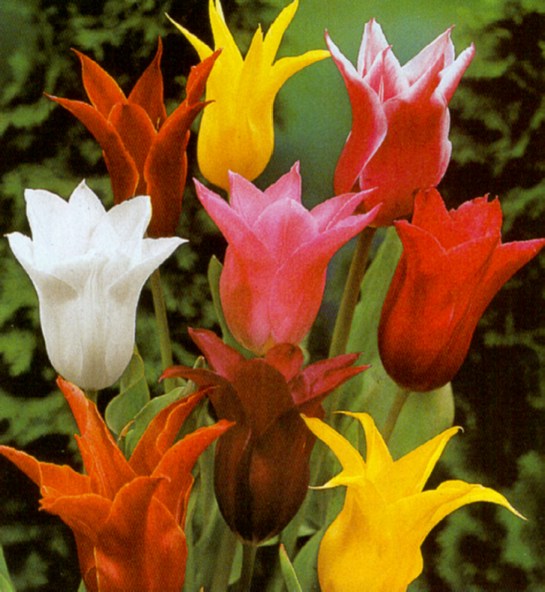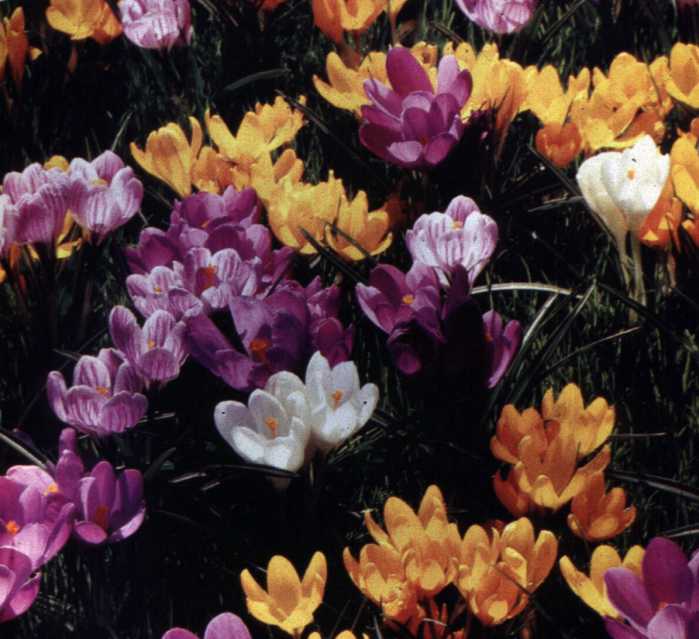Home
Annuals
More Annuals
Perennials
Tips and Links
Gardening Terms
Gardening Links
Sitemap
Plant Doctor Blog
Vegetables
Tomatoes
Beans & Corn
Fall Salad Garden
Going Green
Starting a Garden
Lawn Care
Spring Bulbs
Summer Bulbs
House Plants
Plants in Containers Groundcovers
Growing Roses
Compost
Manure Tea
Frost Dates
Hardiness Zones
Winter Annuals
Please click on Google ads to support this site.
Please click on Google ads to support this site.
|
Bulbs are basically a storage device that contains the embryo plant as well as the food the new plant needs to grow above ground. They give a quick start to the plant and provide a way of multiplying the planting. Most bulbs divide when they grow large enough and also put out small bulblets that can eventually produce full size plants. Some people plant bulbs in beds to provide an early show of bright colors. Others prefer to place clumps dotted through the yard giving them a natural look. This is known as "naturalizing". A bulb planter is a garden tool shaped like a hollow cylinder with a handle for pulling out small clumps of turf so that bulbs can be added to a yard without much digging. Spring bulbs are planted about three times deeper than their diameter. For best results, the soil should be well prepared since bulbs are a permanent additions to the garden. Bulbs should be planted in groups of three to seven bulbs as they look more natural in clumps than in rows. Larger groupings are suitable for smaller bulbs. To keep spring bulbs flowering and prospering each year, it is important to let the leaves remain on the plant until they turn brown which usually happens in early or midsummer. The energy that the green leaves provide replenish the starches in the bulb and get it ready for the next season.
|
Daffodils --Very reliable, there are varieties of daffodils that will bloom from very early to late spring and come in sizes up to 18 inches tall. Narcissus and jonquils are names for the same or similar plants. Colors are limited to shades of yellow or white. Some varieties have orange inner cups. Paper white Narcissus are often "forced" during the winter months indoors by planting in shallow containers of water and pebbles. The bulbs sprout and produce blooms using their own stored food reserves. Daffodils and other Narcissus are poisonous and are avoided by gophers and most other creatures. The bulbs tend to gradually multiply over time. The plants should be allowed to grow as long as the leaves are green. When they turn brown, around May, the foliage can be mowed or pulled out without harming the plant. The bulbs can then be safely removed, divided, and relocated. Plant daffodils in late summer or fall to a depth of at least three times their diameter. Group the bulbs with no less than three together to give a "natural" look. Grape Hyacinth--Carefree, these 4 inch
tall plants don't make much of a show alone, so grow them a dozen or
more per group. The
flower stalks have blooms resembling a small bunch of grapes. The
plants
multiply by seeds and by division of the bulbs. Start new clumps by
planting
them three inches deep about three inches apart. The leaves are very
long
and not very attractive lying limp on the ground. They are a very easy flower for beginners. Tulips --Tulips have the bright colors of spring, but
are not as carefree as some other spring bulbs. Tulips have short
bloom seasons, though
they can look great for a few days.

|
 Crocus in bloom
Crocus in bloom